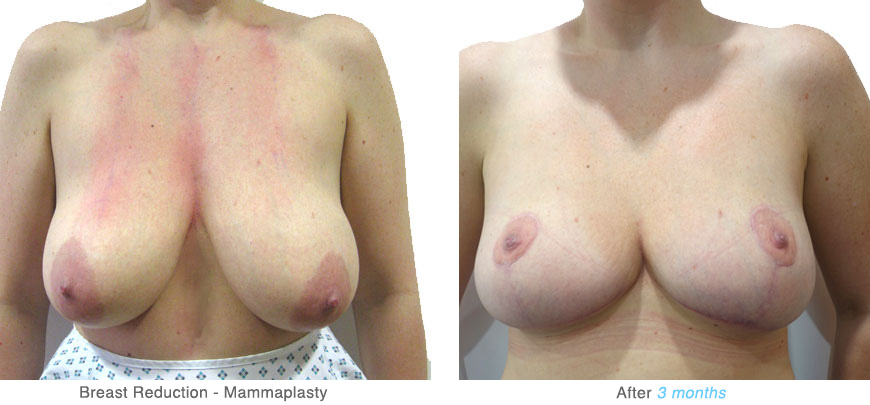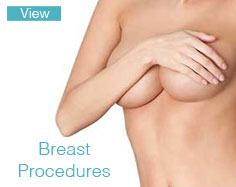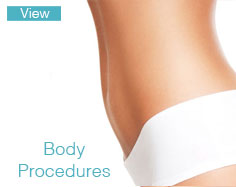Make an enquiry
Breast Reduction

Breast Reduction (reduction mammaplasty) with Mr Hassan Shaaban
Mr. Shaaban worked in the NHS in the field of reconstruction following trauma and cancer surgery. His interest lies in the field of facial, breast and body contouring cosmetic surgery.
Mr Shaaban is a consultant plastic surgeon and is a member of the British Association of Aesthetic Plastic Surgeons (BAAPS), the British Association of Plastic, Reconstructive and Aesthetic Surgeons (BAPRAS) and International Society of Aesthetic Plastic Surgeons (ISAPS).

What is breast reduction surgery?
Breast reduction - often referred to as reduction mammaolasty. Reduction mammoplasty is the plastic surgery procedure for reducing the size of large breasts. In a breast reduction surgery for re-establishing a functional bust that is proportionate to the woman's body.
While fuller breasts are desirable for many, they can be a hindrance to others. Not only can larger breasts cause back pain and discomfort, they can get in the way of simple daily tasks.
According to the BAAPS annual cosmetic surgery audit, in 2019 female breast reduction surgery was up by 7%, with over 4,000 procedures carried out on women across the UK. A further 285 procedures were on male patients.
Who is suitable for breast reduction surgery?
Some of the most common complaints from those seeking breast reduction surgery include: unevenness or asymmetry of the breast, those who suffer with back, neck or shoulder pain, and skin irritation caused by the size of their breasts.
As well as treating women for breast reduction surgery, Mr Shaaban regularly carries out this procedure on men. Often, our male patients looking to have this particular treatment feel self-conscious of excess breast tissue caused by a condition called gynecomastia.
Despite the fact it is rarely talked about, gynecomastia is an extremely common condition amongst men, affecting up to half the male population. It is where swelling or breast enlargement occurs, usually because estrogen levels are high or out of sync with the levels of testosterone. The result is what’s often referred to as ‘man boobs’.
You can find out more information about male breast reduction here.
In order to be considered for breast reduction surgery, you must be at least 18 years old.
What happens during and after a breast reduction procedure?
The breast reduction procedure itself involves a series of carefully planned and measured excisions to reduce the amount of breast tissue. Your surgeon will strategically remove excess fat, skin and tissue, whilst uplifting the breast and reducing the overall size.
After the reduction mammaplasty, you will be required to stay in hospital overnight. Once discharged, you will be given a post-operative care package to follow, to ensure your body heals in a timely fashion and you avoid risk of infection.
All patients have 24-hour access to our team of trained medical professionals, who can assist you if you have any concerns or questions. Throughout your entire treatment process, you will have our full attention and support.
.
What happens during and after a breast reduction procedure?
During the procedure, patients are put under sedation by a trained anaesthetist. The plastic surgeon will then make the precise incision to act as a gateway for the implant. The implant is then inserted carefully into position, before the surgeon stitches the area.
Every case is different, and depending on what type of surgery you have, you may require an overnight stay in hospital. ASET Hospital provides each and every patient with a personalised, tailored care package. Once discharged from hospital, you will receive post-operative care instructions and 24-hour access to our team of highly-trained medical professionals, who will be on hand to answer your questions.
From experience, it usually takes around 2-3 weeks for patients to fully heal from the procedure, but it can take longer depending on the individual. Around two weeks after the procedure, you will be checked by a member of the surgical team to ensure there’s no infection and that the wound is healing properly. At around the six week mark, you will be booked in for a second check-up. If the wound takes longer to heal, ASET will schedule regular check-up appointments with you until you have fully recovered.
We recommend patients avoid strenuous activities and returning to work until at least 2-3 weeks have passed. You should avoid physical exercise for at least 6 weeks.
What type of incision is involved in breast reduction surgery?
The incision lines are very discreet, and the most common method is the wise pattern, which is anchor-shaped and involves cutting around the nipple, then horizontally downwards towards the fold of the breast, then along the crease itself.

Common Q & A on breast reduction surgery
After breast reduction surgery, it can take between 3-6 weeks to heal completely.
It is recommended that you wear loose or stretchy under garments after surgery, or a cotton non-underwired bra.
Your dressings will be removed around 7-10 days after the procedure, and the wounds should take six weeks to heal.
It is at this point you will have a follow-up appointment with the surgeon who carried out the procedure, to ensure everything is well. In the rare instance your wounds have not healed by the six-week mark, you will continue to have regular follow-up appointments until things are back to normal.
It is recommended that you take two to three weeks off work and avoid physical exercise for six weeks.
The incisions made are designed to reduce the visibility of scarring as much as possible. It is normal for scarring to be visibly red in colour until about 6-12 months after the procedure. Once the scars have matured, they should be barely noticeable, if at all. That said, every case is different and it depends on the individual
With any surgical procedure, there are potential risks. The most common side effects after surgery include bleeding, bruising, swelling and discomfort is inevitable after the operation. Scars will be visible after the breast reduction procedure, but should mature over 6-12 months. It is important to note that we cannot guarantee a certain cup size or perfection. The goal is to achieve an improved overall appearance and to reduce the breast size to ease discomfort. Before, during and after your procedure, we are to hand to answer any of your questions, and to outline what is achievable and safe.
After the procedure, you will be required to stay in hospital overnight. Once discharged, you will be given a post-operative care package to follow, to ensure your body heals in a timely fashion and you avoid risk of infection
Your consultation with Mr Shaaban at ASET Hospital
While breast reduction mammoplasty is a common procedure, it is also major surgery, so the decision to undergo the transformation should not be rushed.
The consultation process is thorough, including a full risk assessment of every patient’s physical and mental health.
You will receive extensive information about the procedure itself and the possible outcomes from surgery, as well as the risks associated with breast reduction procedures.
Book your consultation today to learn more about the procedure.




